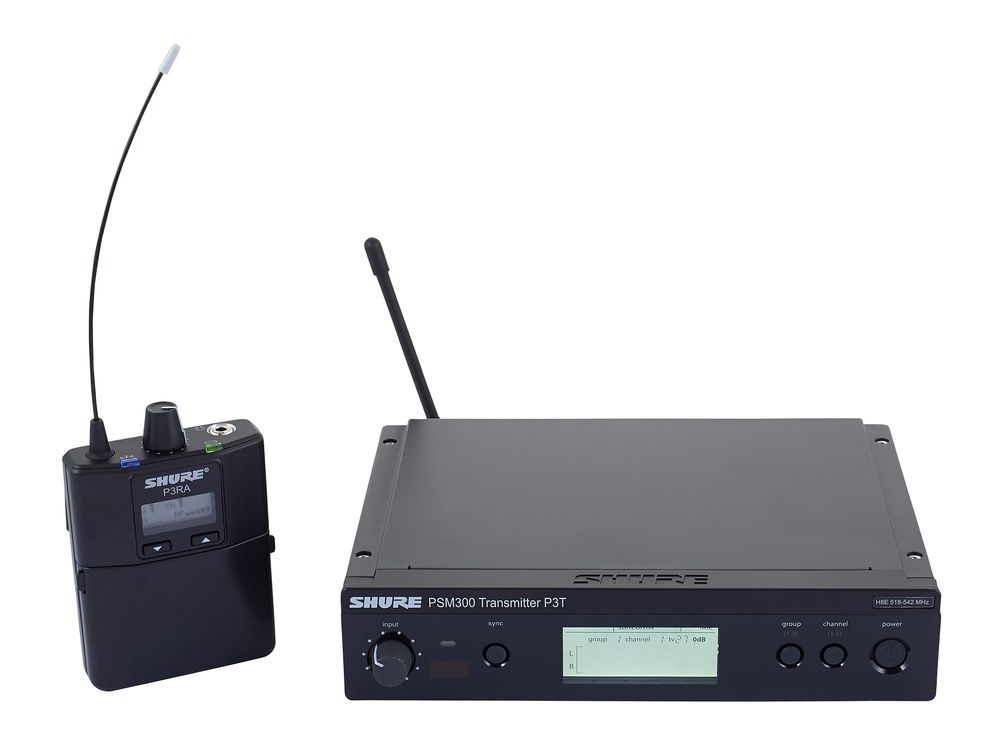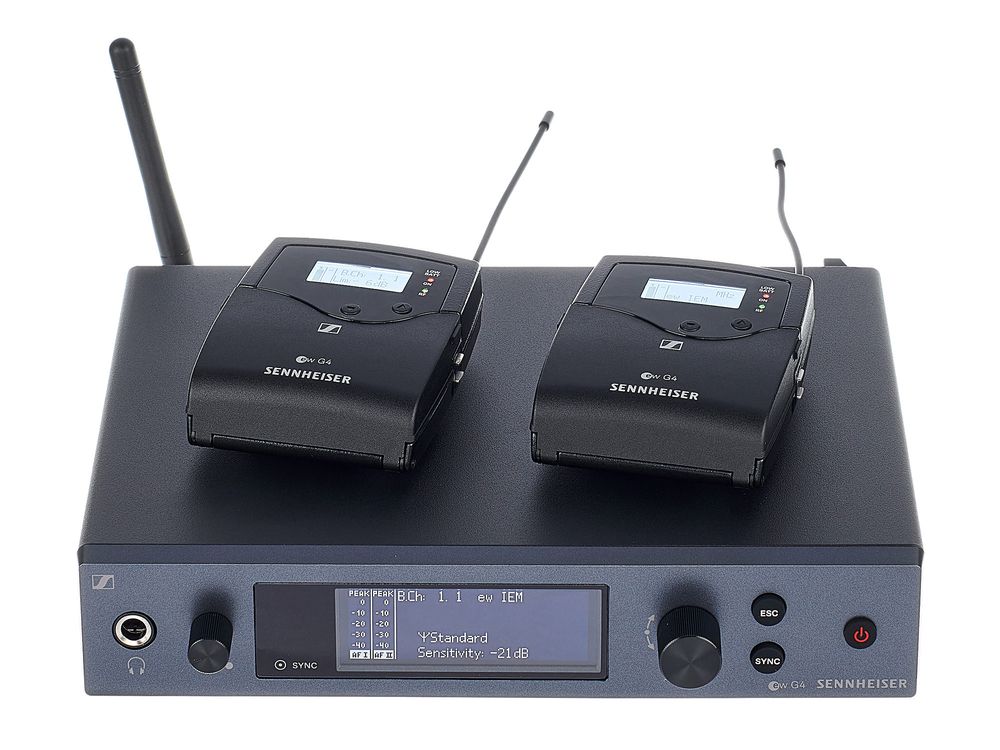6. Wireless In-Ear Systems
In many cases, having a wired system can be a hassle. When you need freedom of movement on or even in front of the stage, going wireless is the better choice. Just keep in mind, for good quality, you might need to cough up a bit more cash. Nowadays, there are budget-friendly entry-level models available, but in terms of sound, they might not always match up to a professional version. We'll dive into that a bit later.

Wireless In-Ear Monitoring System
As mentioned earlier, an In-Ear Monitoring System consists of a transmitter and at least one receiver. Think of it like a radio. The signal from the transmitter can be listened to on as many receivers as needed, as long as they're tuned into the same frequency as the transmitter. So, if multiple musicians are cool with the same monitor mix, you only need one transmitter and the required number of receivers.
However, if each musician wants their own mix, you'll need a complete wireless system per person, except for one case:
Mono/Stereo/Mix Mode
Most wireless In-Ear systems transmit two signals. That means it's not just about a mono signal; you can also transmit a stereo signal. For mono, only one input on the transmitter is used, and the same signal reaches both ears on the receiver. In stereo mode, there's a left and right signal in the transmitter. Consequently, two buses on the mixing desk are used.
Some systems offer what's called a Mix Mode or Focus Mode, alongside mono and stereo operations. Here, both input channels of the transmitter carry two different signals (e.g., band mix and lead vocals). Both signals reach the receiver in mono, equally in both ears. But with the balance knob on the receiver, you can adjust the volume ratio between the input channels, like a crossfader on a DJ deck. Push it to the right, and the vocals get louder relative to the band; shift it left, and the vocals fade into the background.
The Mix Mode is handy even when two musicians share one transmitter. The guitarist's monitor mix goes into Input 1, while the bassist's goes into Input 2. The guitarist turns the balance all left, hearing only the signal from the first input in both ears. The bassist does the opposite, turning the balance all right, hearing only Input 2.
Using the Mix Mode for two musicians saves money and radio channels. It makes it easier and more cost-effective to set up complete band setups.

Wireless In-Ear System for Two Musicians
By the way, the Mix Mode is available in many wired systems too. For instance, the drummer can distribute band mix and click track across the inputs and adjust their volume ratios.
Sound
In monitoring, it's crucial for the signal to reach musicians without significant delays. Especially in the rhythm section, a delayed monitor signal would be a total mess. With digital systems, there's always a delay due to the analog-to-digital conversion (latency). Analogue systems don't have this latency issue, but most wireless In-Ear systems are analogue. However, there's always some loss in sound quality. Depending on the components' quality, this loss can be more or less noticeable. Lower-quality systems often struggle with transmitting low and high frequencies, produce more noise, have a limited dynamic range, and sometimes fall short on maximum volume. But hey, there are exceptions to every rule. Plenty of affordable systems, especially for beginners, are entirely sufficient in terms of sound quality. Still, if you're on a tight budget and can sacrifice movement freedom, consider a wired system for better sound. By the way, even with professional wireless systems, you won't quite hit the sound quality of a good headphone amp – but you'll be able to zoom around the stage and do some epic stage dives without a hitch.
Multi-Channel Systems
The more musicians in the band using wireless In-Ear Monitoring, the more complex the frequency and antenna situation gets. Cheap wireless systems aren't designed for larger setups because multiple systems can interfere with each other faster. Antenna combiners, essential in any In-Ear rack with many wireless systems, are only offered by reputable manufacturers. As the In-Ear setup gets bigger, it becomes quite complex and requires technical know-how to run it without interference.
If you're planning to use In-Ear Monitoring on a larger scale, our team is here to help. Our PA department experts can assist in choosing wireless systems, provide practical tips, and offer professional advice. Reach out to them at +49 9546/9223-35, per email at pa@thomann.de, or through the chat.




